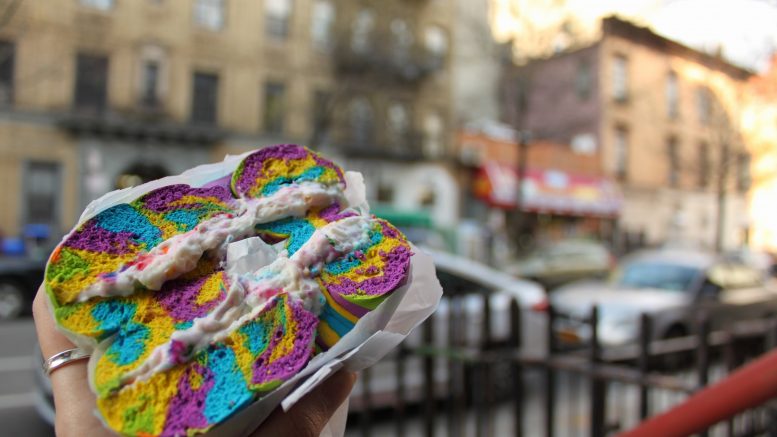Sixty percent of U.S. diners report browsing through pictures of food on social media, and 75 percent say they’ve chosen places to eat based off these pictures alone, according to a National Dining Trends Survey by Zagat. Sophomore broadcast media major Aleigha Alexander is one of the people.
“I’d seen pictures before on Instagram [of avocado toast] and got into the hype, you know? Then, I go to Cheesecake Factory with a friend and I see that the person sitting next to us had ordered avocado toast, and so I thought ‘why not?’” said Alexander. “It was one of the cheaper things on the menu and Instagram had already made me curious.”
Catherine C. Coccia, assistant professor here and registered dietitian, provided some insight on this possible correlation.
“… Food advertising in traditional ways (such as TV and radio) increases our consumption of the items being advertised,” Coccia said. “I would assume seeing images of food on social media would create similar reactions in the viewers.”
A study conducted by Coccia and her research team also found that posting pictures of your food can also influence your diet and affect nutrition.
“A recent study done by my research team found that posting ‘food selfies’ or pictures of your meals on social media websites may actually decrease the calories that you consume,” said Coccia.
A few years ago, 50 student-athletes at the University participated in her study and were asked to follow them on Twitter and respond to their research account for a six-week period.
“At the end of the intervention, we found that nutrition knowledge scores increased, fat intake decreased and the subjects actually decreased their body mass index scores,” Coccia said. “So social media can be a powerful tool for changing health behaviors, it just depends on how you use it.”
It’s a phenomena that’s not limited just to Miami, according to Bailey Cullen, a sophomore recreational therapy major who transferred from Philadelphia.
“My friend and I used to freak out over rainbow bagels,” Cullen said. “She’d send me pictures that she’d found on Pinterest all the time until we finally went to this place called Bagel Hut, they were even better than they looked.”
Students add that videos they see on social media sites like Instagram, Facebook, Snapchat, or Pinterest, also pique their interest.
“I first saw rolled ice cream on one of those Facebook Tasty videos,” said sophomore broadcast journalism major Alicia Nwajei. “It looked so good that I just thought to myself ‘you have to try this’ and found an ice cream bar that served some in North Miami … ”
Our on-campus Jamba Juice is home to the energy bowls —healthy blends with your choice of whole fruit, Greek yogurt, or soy milk, energy bowls— have attracted students from The Biscayne Bay Campus, like junior marine biology major Bailey Gleason.
“A friend told me to check out the on campus Jamba Juice. I’d seen those energy acai bowls on Instagram and had people sending me snaps of it while they were eating it,” said Gleason. “It was totally worth the hype.”
Part of the appeal of energy bowls and rainbow bagels, Gleason said, might lie in their distinctness.
“They’re different, out of the ordinary,” he said. “They look good online and not something you eat every day.”
Zagat’s national survey further reports that 44 percent of diners say they take pictures of their food to share on social media while dining out, and that 60 percent admit to even stopping their companions from eating so they can snap a picture of their food, too.
“Someone takes a picture, it spreads, and suddenly this is the new thing you have to try. Next month it’ll be something else … I don’t think it’s a bad thing, it’s not like I’m basing everything I eat around what I see on social media,” said Gleason.
Coccia weighed the possible ramifications of social media’s influence on our dietary habits, if in fact a connection does exist, reminding students to exercise caution.
“I think it depends on the types of images being posted and viewed; when you are trying to change your diet, it can sometimes be hard to come up with ideas for tasty health foods that you can eat. Social media including Instagram and Pinterest might be a great forum for ideas, pictures and recipes,” said Coccia.
Coccia notes an increase in the number of people looking to social media for health advice and recommends looking for reputable sources.
“Just because a person has a lot of followers – doesn’t mean that they are a credible source of health information,” she said.
Photo retrieved on Flickr






Be the first to comment on "Social media has changed the dining experience"